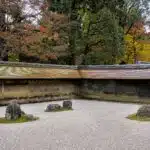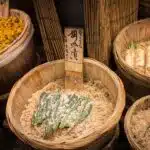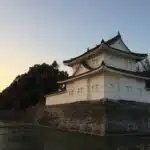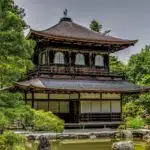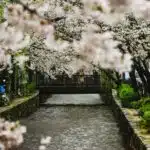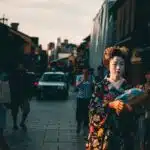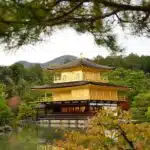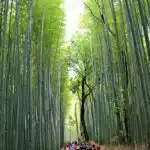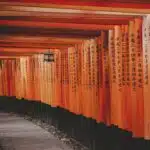Kiyomizu-dera is one of Kyoto’s most celebrated temples, known for its wooden stage that juts out 13 meters above the hillside, offering panoramic views of the city and surrounding forests. Founded in 778, this UNESCO World Heritage Site is a masterpiece of Japanese architecture and spirituality, famous for its connection to the sacred Otowa Waterfall.
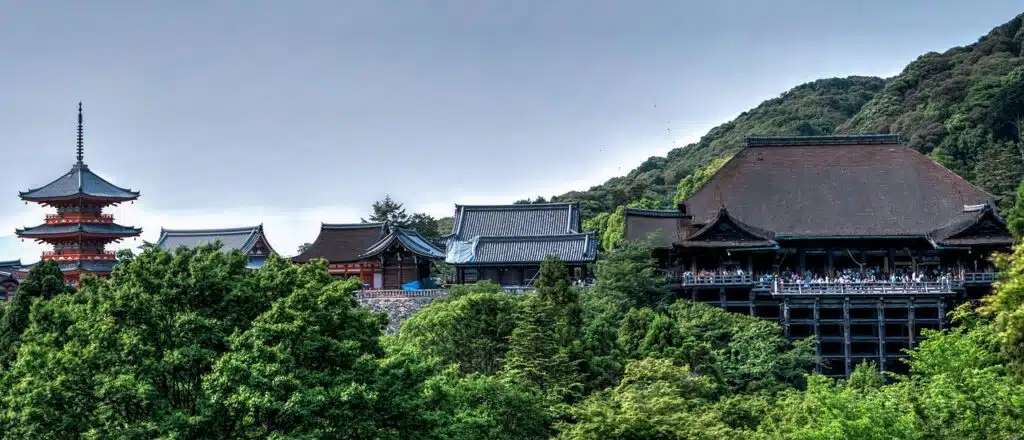
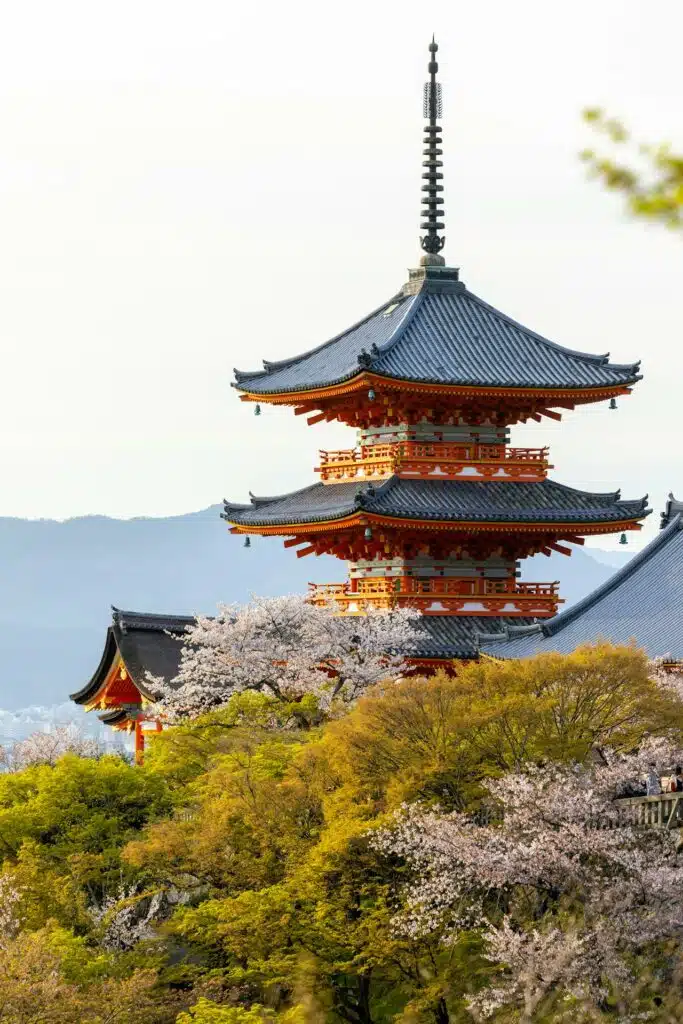
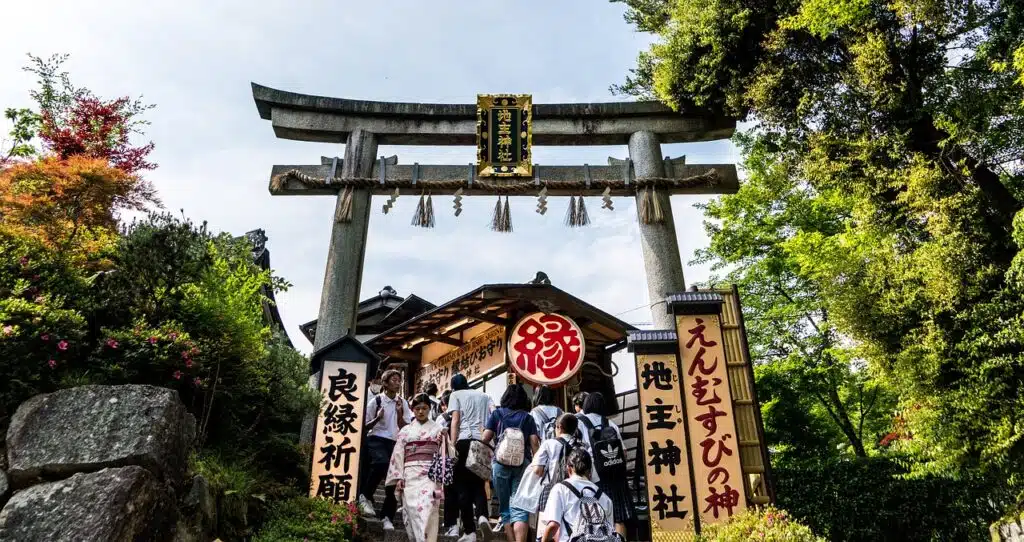
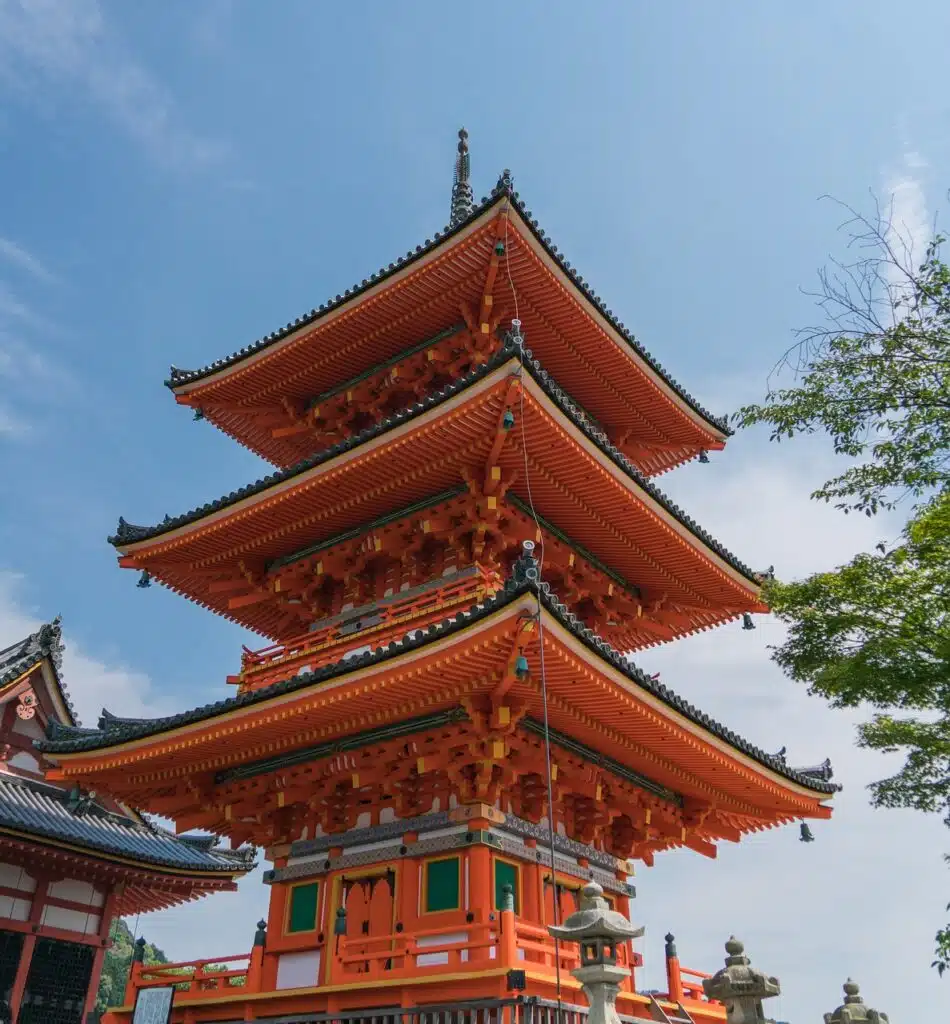
What to See at Kiyomizu-dera
- The Wooden Stage: The temple’s most iconic feature, the stage extends from the main hall and is supported by hundreds of wooden pillars. It offers stunning views of Kyoto, especially beautiful during cherry blossom season in spring and autumn foliage.
- Main Hall (Hondo): The main hall, built without the use of nails, houses a statue of Kannon, the goddess of mercy, which is only shown to the public once every 33 years.
- Otowa Waterfall: At the base of Kiyomizu-dera is the Otowa Waterfall, where visitors can drink from three streams of water, each said to bring benefits such as success, love, and longevity. It’s a popular activity for visitors.
- Jishu Shrine: Located within the temple complex, this shrine is dedicated to the deity of love and matchmaking. Visitors often try to walk between two stones placed 18 meters apart with their eyes closed—successfully doing so is said to bring luck in finding love.
- The Pagoda and Grounds: The temple grounds are filled with beautiful pagodas, gates, and smaller shrines, along with paths winding through gardens and forested areas. The paths offer peaceful strolls with occasional views of the city below.
- Seasonal Illumination: Kiyomizu-dera is especially popular in the spring and fall when the temple is illuminated at night, creating a magical atmosphere against the backdrop of blooming sakura or vibrant autumn leaves.
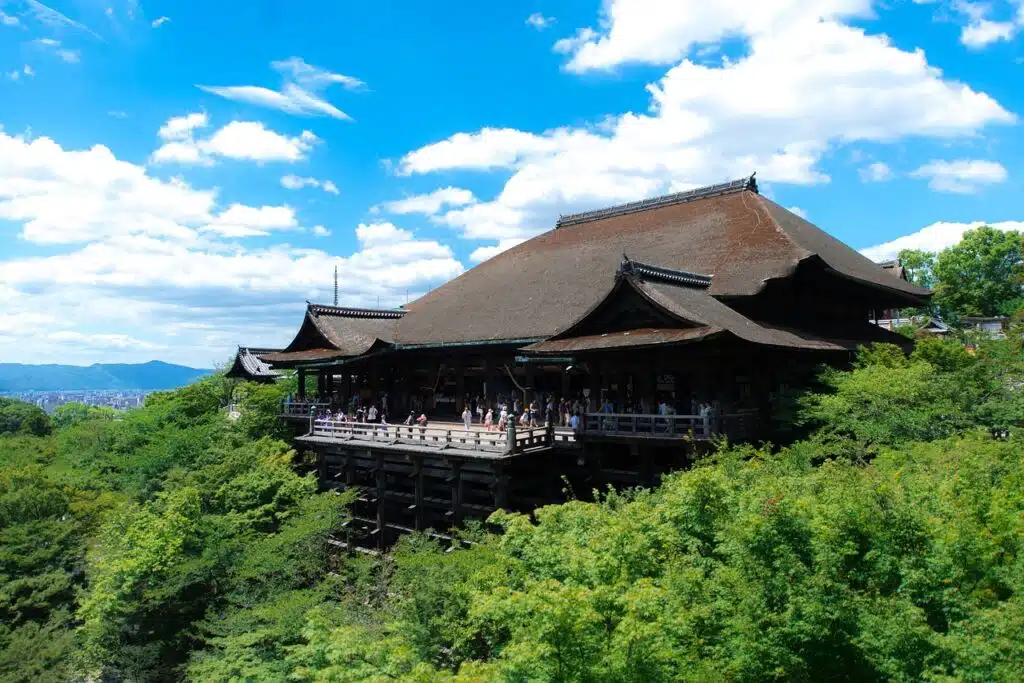
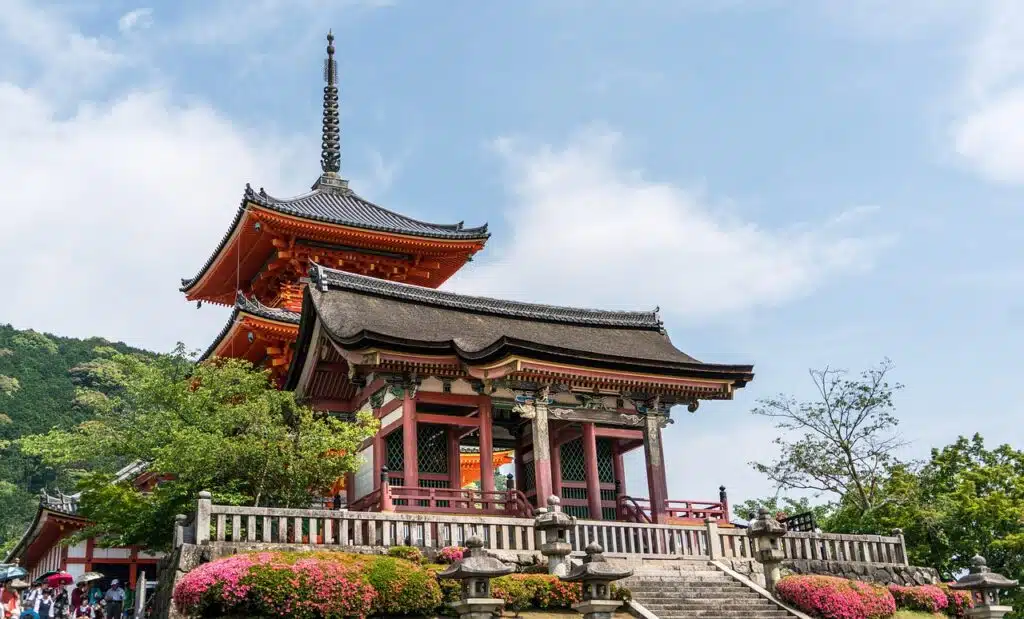
Tips for Visiting Kiyomizu-dera
- Best Time to Visit: Early morning is the best time to visit to avoid crowds, especially during peak seasons like cherry blossom and autumn foliage. The temple is stunning in all seasons, but spring and autumn are particularly magical.
- Photography: The wooden stage and surrounding landscape make for excellent photos. Try to visit during the golden hour, either early in the morning or late in the afternoon, for the best light. The seasonal illuminations are also a great time for night photography.
- Prepare for Crowds: Kiyomizu-dera is one of Kyoto’s most visited temples, so it can be crowded, especially during peak tourist seasons. Arriving early in the day will help you avoid the busiest times.
- Comfortable Shoes: The temple is located on a hillside, and exploring the grounds involves walking on sloped paths and stairs. Comfortable shoes are a must.
- Cash for Offerings and Souvenirs: Small offerings and charms can be purchased throughout the temple complex. While major souvenir shops may accept cards, smaller stalls usually require cash.
- Don’t Miss the Waterfall: Drinking from the Otowa Waterfall is a must-do for many visitors. However, be prepared to wait, as the line can be long during busy periods.
- Combine with Nearby Attractions: Kiyomizu-dera is located near the historic Higashiyama District, a well-preserved area with traditional shops, tea houses, and narrow lanes. It’s a great place to explore before or after your temple visit.
- Accessibility: The temple’s location on a hill can make accessibility challenging for some visitors. There are steep paths and stairs throughout the grounds, so plan accordingly.
Getting There
Kiyomizu-dera is accessible by bus from Kyoto Station, with a short uphill walk to the temple entrance from the nearest bus stop. It can also be reached on foot from nearby landmarks such as Yasaka Shrine or the Gion district.
Why Visit Kiyomizu-dera?
Kiyomizu-dera offers a perfect combination of breathtaking views, rich history, and spiritual experiences. From the iconic wooden stage to the sacred waterfall, this temple is a must-see for anyone exploring Kyoto’s cultural heritage.

